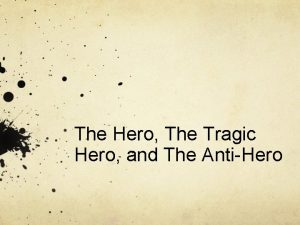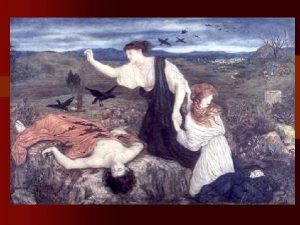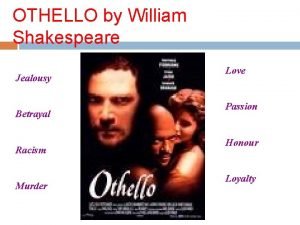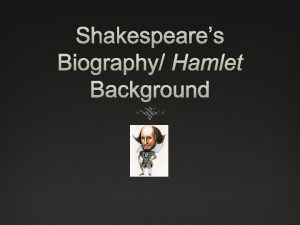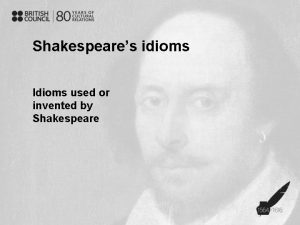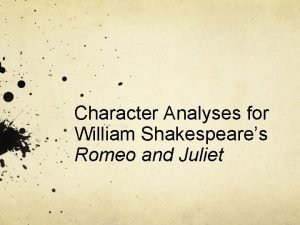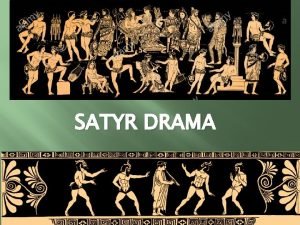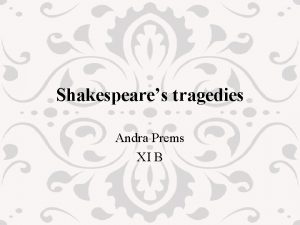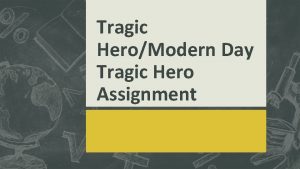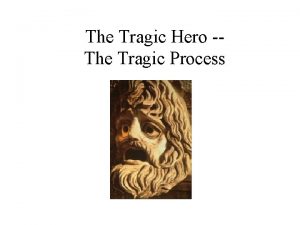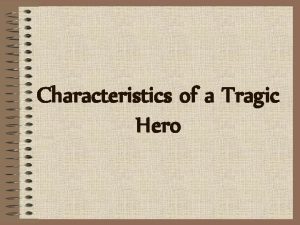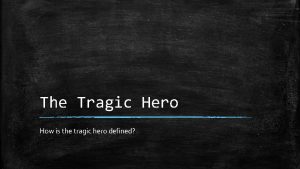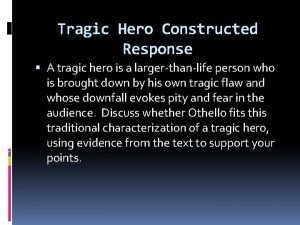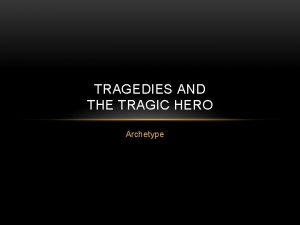Shakespeares Tragic Hero Formula The Tragedies 3 categories











- Slides: 11

Shakespeare’s Tragic Hero Formula

The Tragedies 3 categories: Comedies Histories Tragedies ØTragedy: A play about the downfall of a central character.


Shakespeare’s Tragic Hero • Tragic Hero: Character who meets destruction because of a tragic flaw. • Tragic Flaw (Hamartia): A personality trait that causes a lapse in judugement. – Example: Pride or greed.

5 Major Criteria 1. He must be a person of some high stature or position such as a King, General, or Nobleman. 2. Though he’s a good person, he frequently makes serious errors in judgment which lead him to committing his downfall. 3. Often he has a distorted perception of, or is blind to, reality. 4. He must elicit both pity and fear from the audience (catharsis). 5. He chooses his outcome; he is not a victim of fate or circumstance.

Why Tragedy? • Catharsis means to purge or cleanse. • Both Plato and Aristotle argued that witnessing tragic theater grants the audience this experience. • Aristotle argued witnessing tragic drama simply forces us to temporarily experience the dangers of wrongdoing. • This experience teaches us a basic cautionary tale at a deep, truly terrifying emotional level.

Hamlet, Macbeth, King Lear and Brutus are just a few of Shakespeare's characters that may be considered tragic heroes. Identify some tragic characters from recent films, tv shows, or books. Explain how they fit a specific part of the tragic hero criteria. Example: Walter White in Breaking Bad.

Key Literary Elements of the Play • Protagonist(s): Othello, Desdemona, Cassio • Antagonist: Iago • Setting: Venice and Cypress • Conflicts: Person vs. person, person vs. society, person vs. self • Subjects/Themes: Appearance vs. reality, jealousy and betrayal, love

5 Part Dramatic Structure

Significant Techniques • Blank verse: Unrhymed iambic pentameter • Figurative Language: Simile, metaphor, personification, allusions, punning (play on words) • Soliloquy: When a character speaks aloud about their feelings and thoughts to himself and to the audience. Soliloquies are delivered when characters are alone or when they think they are alone on stage.

• Aside: A piece of dialogue intended for the audience or another character, but not heard by the other actors on stage. • Irony: Dramatic, situational, verbal • Suspense and Foreshadowing: Anticipation regarding an outcome/clues given that hint toward an outcome.
